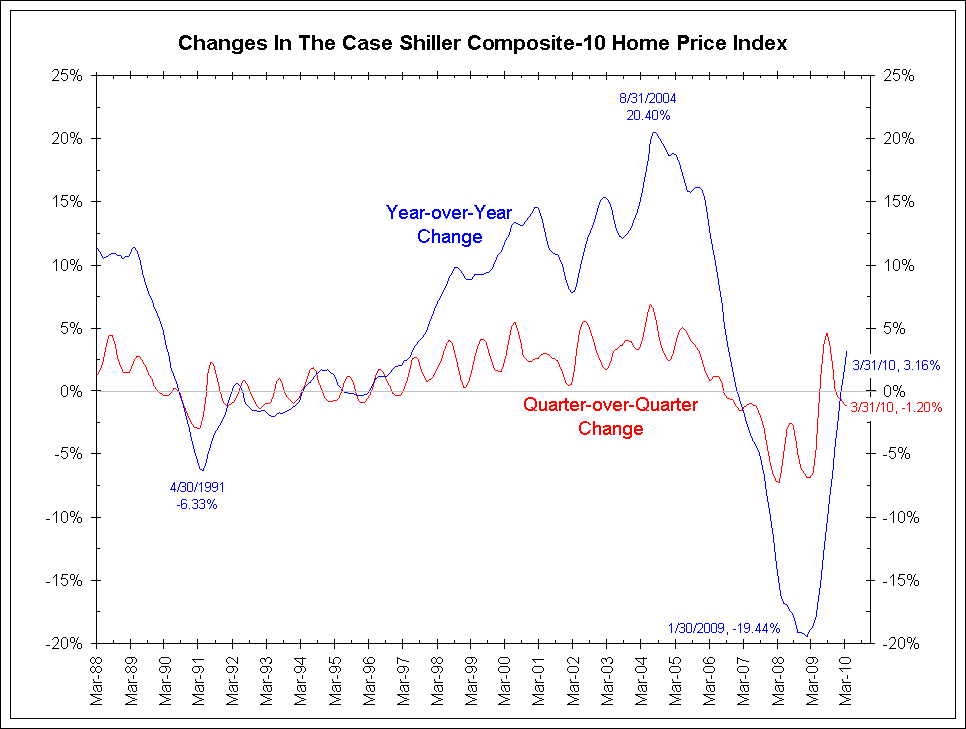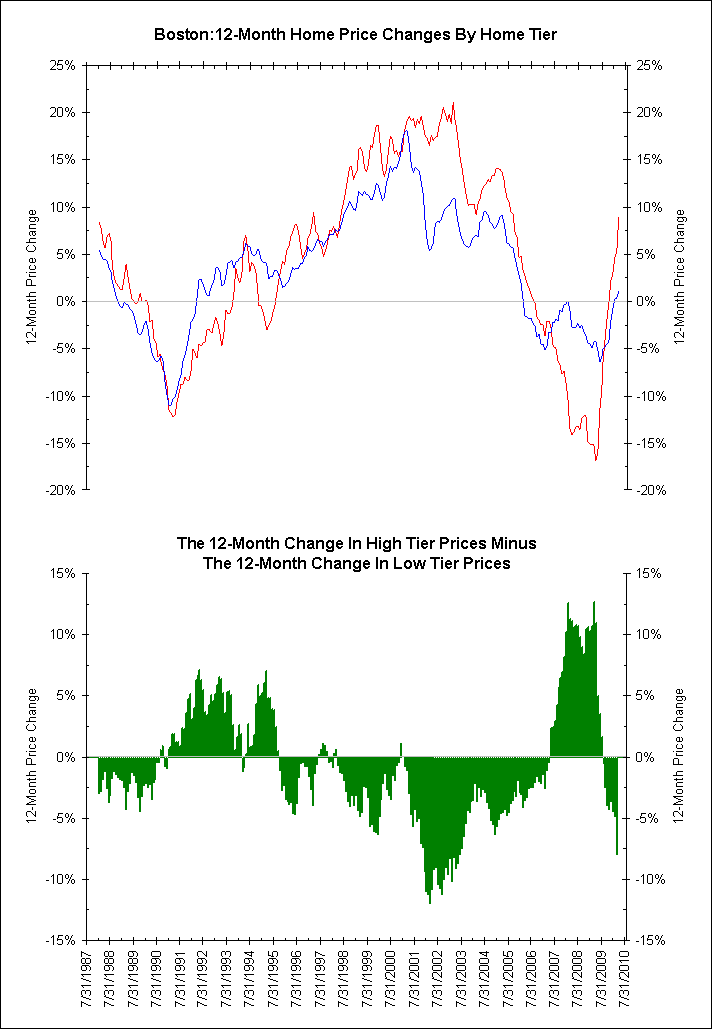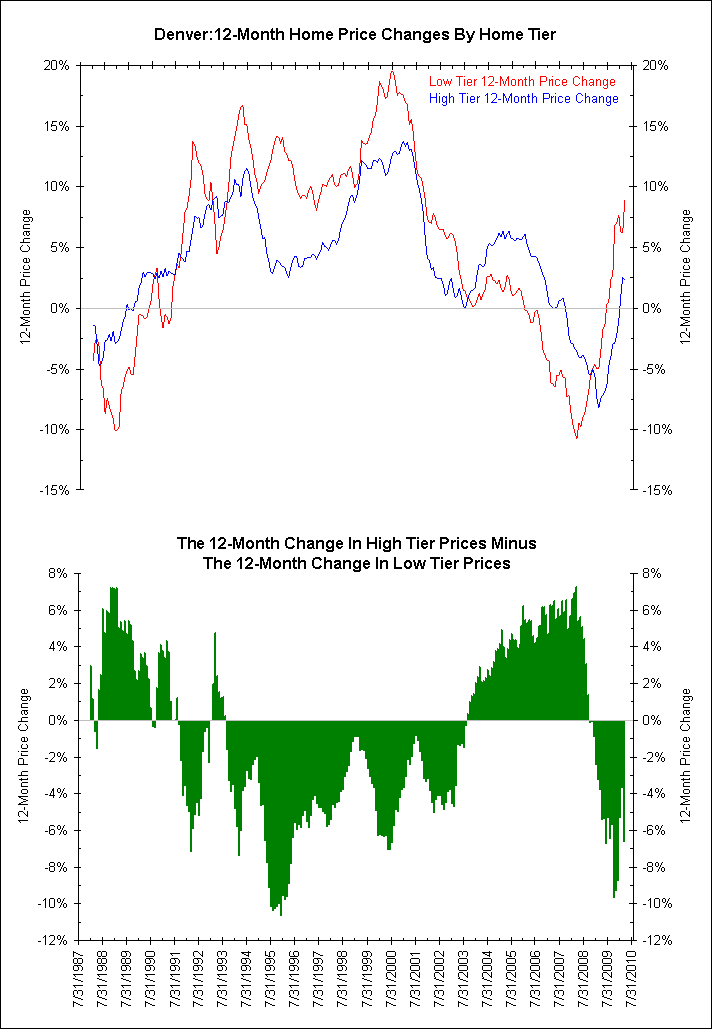As the chart below shows, the S&P/Case-Shiller Composite-20 Home Price Index bottomed in January 2009 on an annual basis. The quarterly change has once again turned lower, leading some to speculate that home prices may not be out of the woods yet. Now that the first time homebuyer’s credit has expired, what should be expected of home prices in the near future?
<Click on chart for larger image>
In a March 2, 2010 post on home prices, we pointed to the disparity between high-tier house prices and low-tier house prices as evidence that the housing market was being artificially propped up by the government. As we originally wrote:
If housing as a whole were rebounding for reasons other than the [first time home buyers] tax credit, we would not expect to see the large levels of disparity between the high-tier and low-tier markets…Since we do, it suggests that government subsidies, and not a proper equilibrium between supply and demand, caused the Case-Shiller Index to bottom last April.
A Low-Tier Rally
Below are a couple of charts showing the latest update for the Boston and Denver markets. To see similar charts for all 10 markets in the Case Shiller Composite-10 Home Price Index, click here.
<Click on chart for larger image>
<Click on chart for larger image>
Most housing markets across the country have seen much faster price appreciation in low-tier homes during the life of the homebuyer’s credit (which ended April 30). This could partially be attributed to the fact that low-tier prices fell faster, motivating the creation of the tax credit, and could have been expected to rebound more. However, most think the tax credit did create demand from non-homeowners (who typically rent) and assisted the low-tier price rally.
Although we will have to wait a few months after the April 30 expiration of this tax credit to see its effects, we would expect the low- and high-tier markets to return to a more stable relationship. Because so much demand has already been pulled forward by the tax credit to purchase low-tier priced homes, we look for slower appreciation or even price drops on the low-tier while the high-tier continues to be unaffected. This should serve to slow the appreciation of the overall home price indices.





What's been said:
Discussions found on the web: